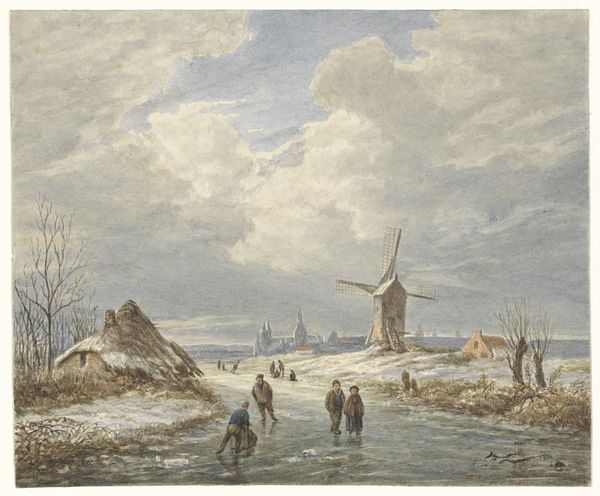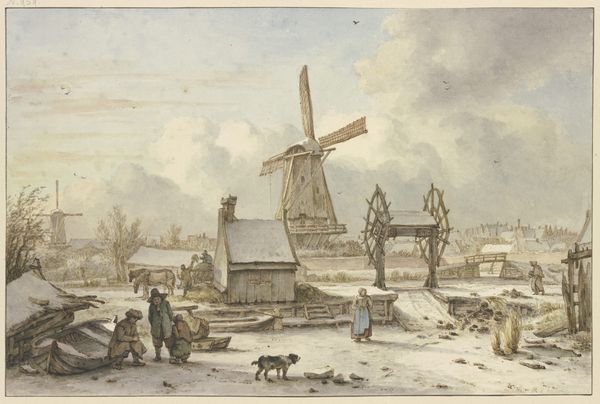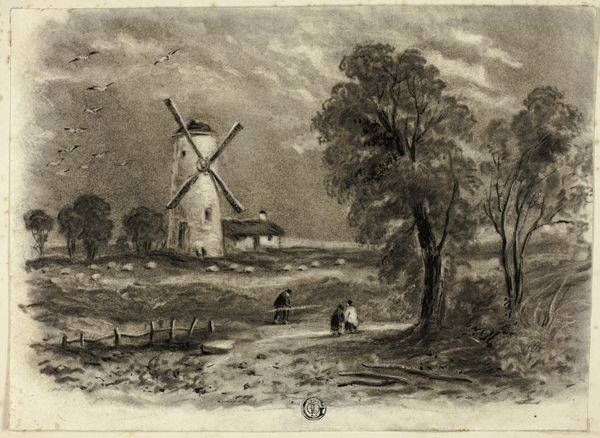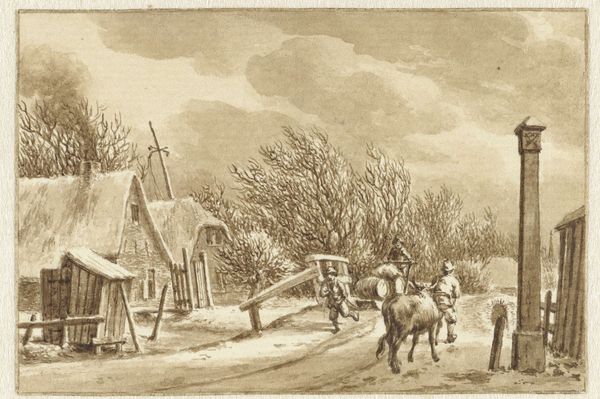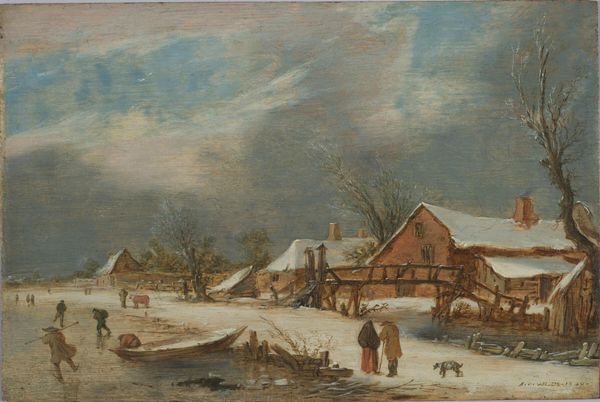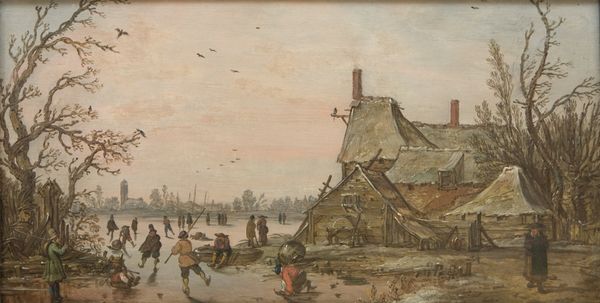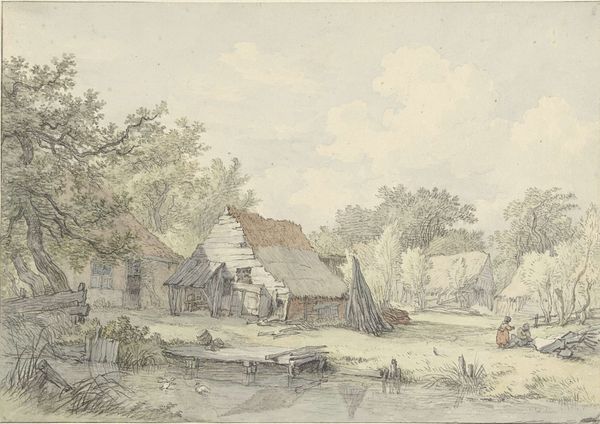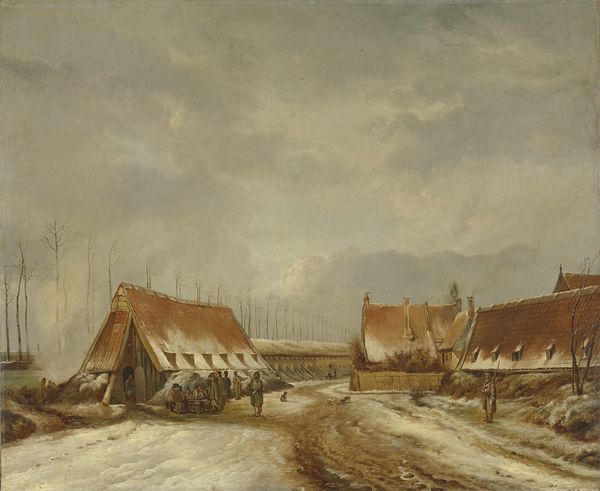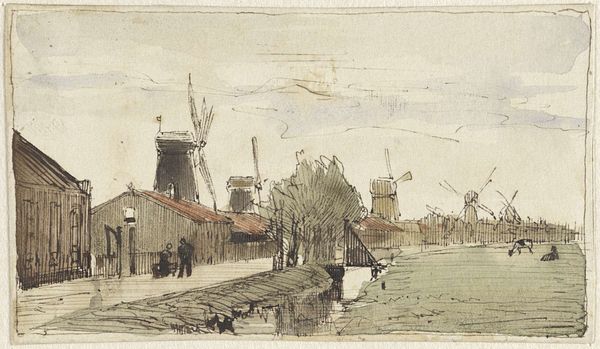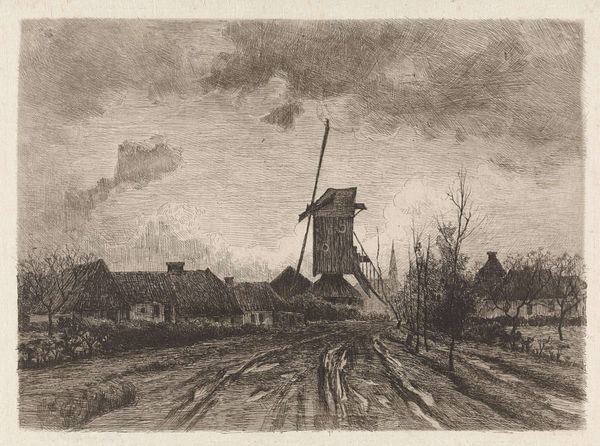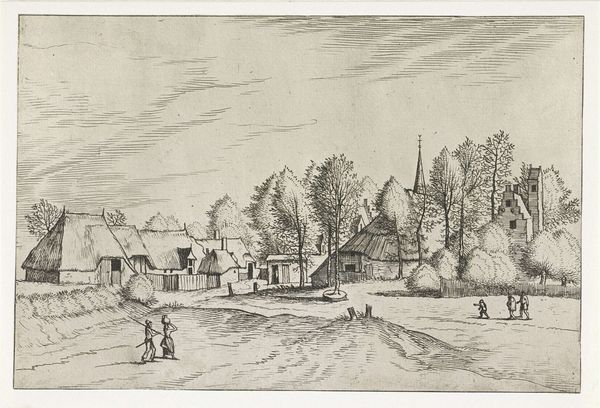
drawing, pencil
#
drawing
#
pencil sketch
#
landscape
#
romanticism
#
pencil
#
architecture drawing
#
genre-painting
#
realism
Dimensions: height 218 mm, width 313 mm
Copyright: Rijks Museum: Open Domain
Curator: Brrr, this drawing makes me feel cold just looking at it! It’s like I can feel the chill of the ice. Editor: Indeed! Let me introduce Gerrit Lamberts' "Winterlandschap," created around 1815. The Rijksmuseum is fortunate to have this delicate pencil drawing in its collection. Curator: Delicate is a perfect word. But the quietness of the drawing belies the realities for people during that period. Imagine how harsh winters were for the poor, especially during and after the Napoleonic Wars. Winter wasn’t just picturesque, it was a matter of survival. Editor: Absolutely. Note how Lamberts meticulously captures the nuances of light on snow, the stark lines of bare trees against the wintry sky. The composition uses subtle gradations of tone to achieve a remarkable sense of depth and atmosphere. Curator: And there is an implied commentary on gender too, no? Women and children remain near the domestic spaces, whereas men populate the open, iced over landscape, going about what are presumed to be crucial work-related activities. The village architecture is also particularly telling about class and power. Editor: I appreciate you pointing that out. But from a formalist perspective, I'm most drawn to how the windmill serves as a strong vertical anchor. The diagonals of the rooftops and frozen pond create dynamic movement within the overall stillness. Lamberts is really masterful in directing the eye. Curator: Of course, that windmill has historical significance. These were years of upheaval in the Netherlands. The traditional structures, both societal and architectural, were literally under pressure to change, just as those windmill sails would have been fighting the winter winds. Editor: A compelling perspective, connecting broader historical narratives to the structure itself. Looking closely, the materiality seems understated yet purposeful, right? The precision in the pencil strokes gives a tangible quality to the textures. Curator: Exactly. And consider the perspective of marginalized communities back then—the unseen labor, the power dynamics… those silences are potent. It compels us to understand the social history of the landscape as more than simply "picturesque." Editor: It's fascinating to consider the artist’s engagement with representing depth and the social experience you describe simultaneously. The interplay really resonates and I think brings a complexity to a scene which, at first, seemed uncomplicated. Curator: This has certainly opened new ways for me to consider Gerrit Lamberts.
Comments
No comments
Be the first to comment and join the conversation on the ultimate creative platform.
